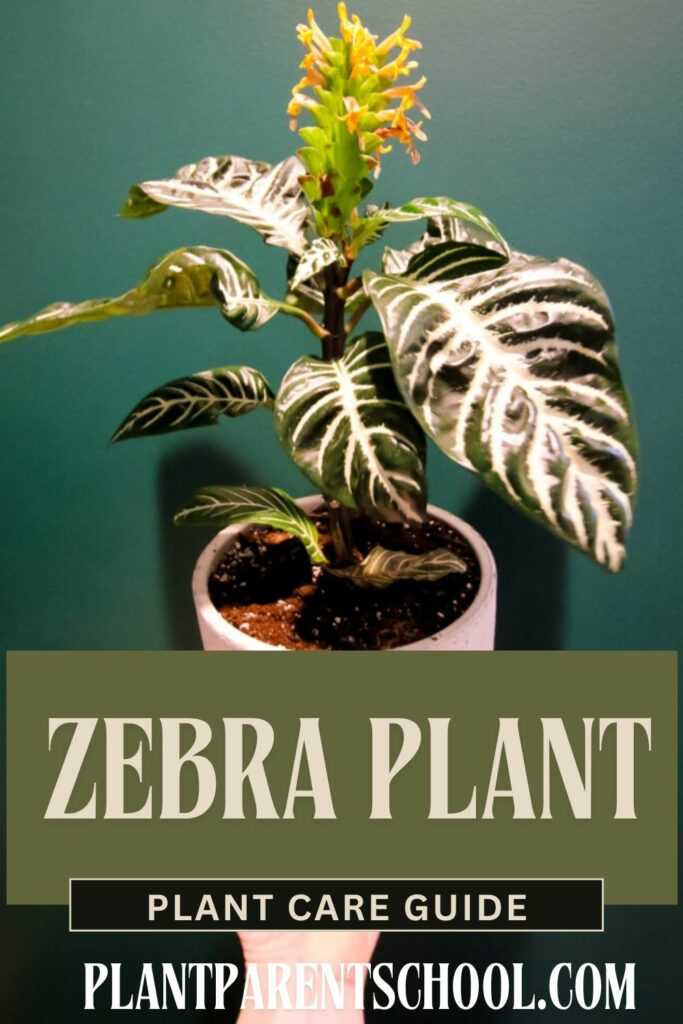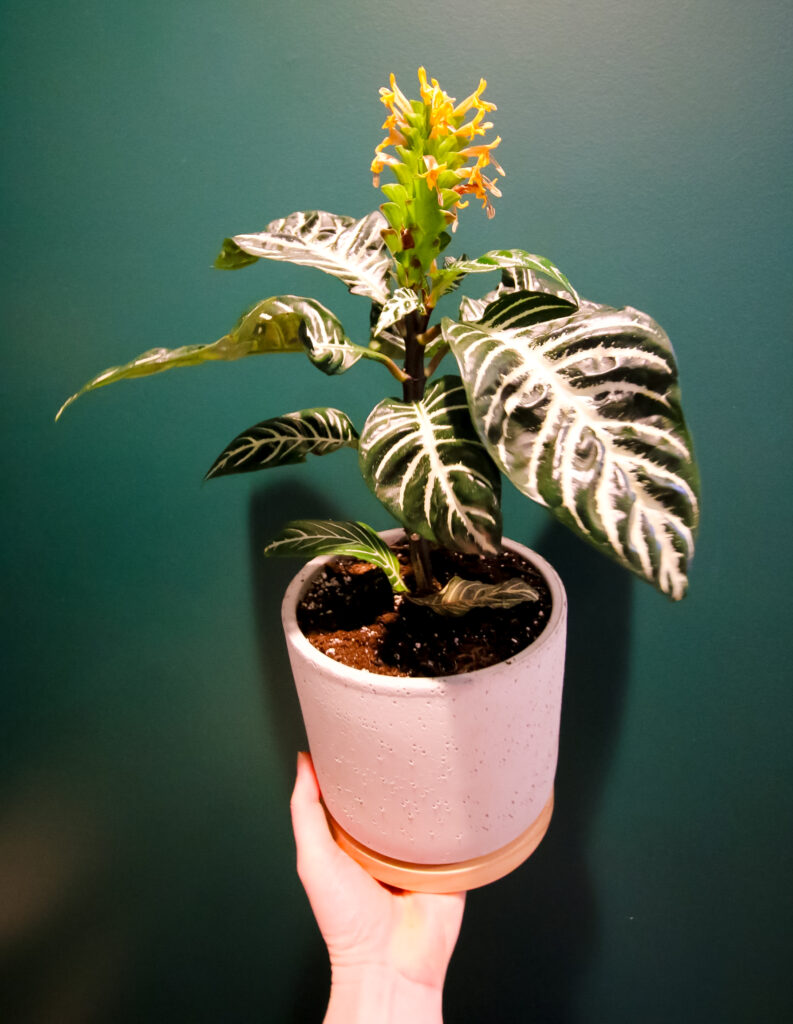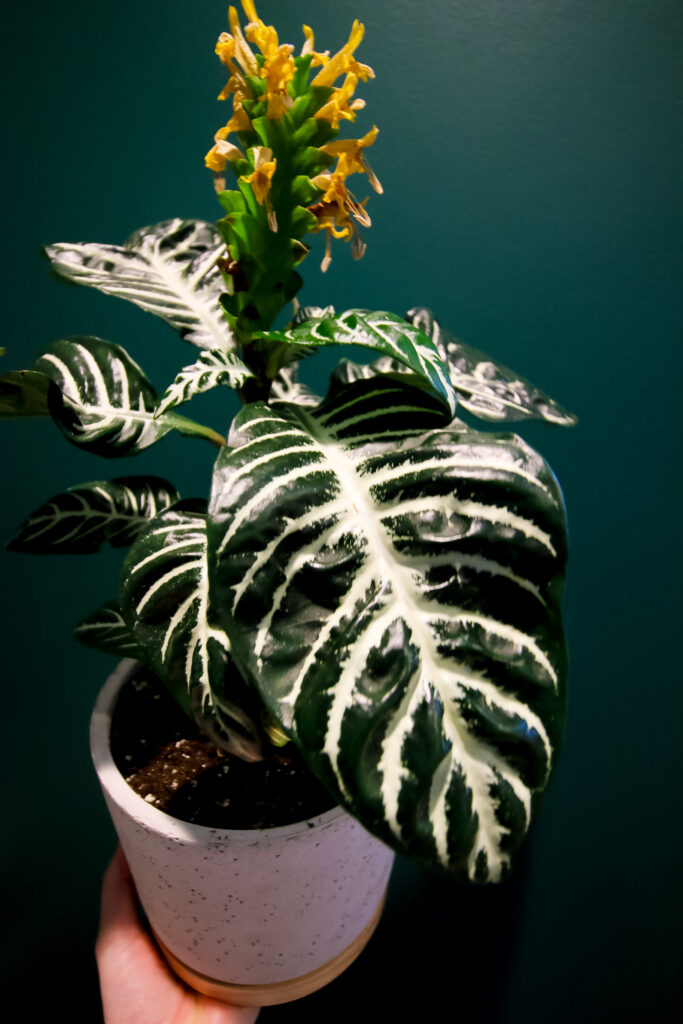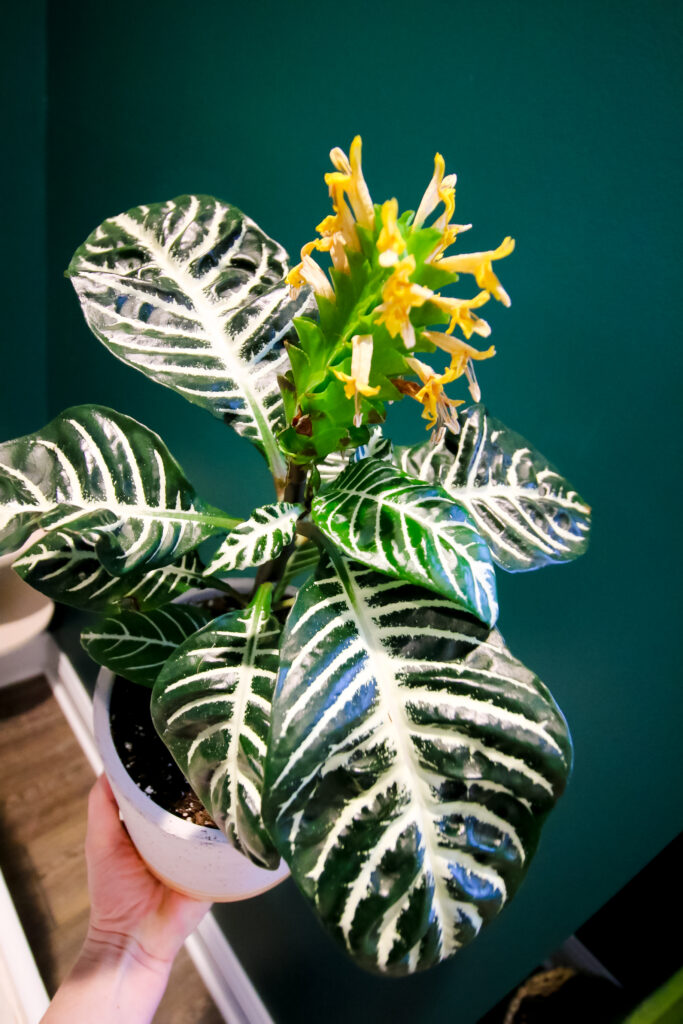The Zebra Plant, known for its striking foliage and colorful yellow flowers, is a popular houseplant that requires specific care to thrive.
This guide will provide all the essential tips for maintaining a healthy and beautiful Zebra Plant.
Quick Look
🌞 Lighting needs: Bright, indirect light
💧 Watering needs: Keep soil consistently moist, but not waterlogged
📏 Mature Height: Up to 2 feet indoors
🌱 How to propagate: Stem cuttings
🚫 Toxic/non-toxic: Non-toxic to pets
🌸 Flowering: Yes

Zebra Plant Care Guide
The Zebra Plant (Aphelandra squarrosa) is a tropical plant native to Brazil, admired for its dark green leaves with white veins resembling zebra stripes.
With proper care, it can also produce stunning yellow flower bracts, adding a splash of color to your indoor garden.
Lighting
Zebra Plants thrive in bright, indirect light. Avoid direct sunlight, as it can scorch the leaves.
Place the plant near an east or north-facing window where it can receive filtered light throughout the day.

Watering
Keep the soil consistently moist, but not waterlogged. Water the plant thoroughly when the top inch of soil feels dry to the touch.
Ensure proper drainage to prevent root rot. During the growing season (spring and summer), increase watering frequency, while reducing it in the fall and winter.
Humidity and Temperature
Zebra Plants prefer high humidity and warm temperatures. Maintain humidity levels around 60-70% by misting the plant regularly or using a humidity tray.
Keep the temperature between 65-75°F (18-24°C) and avoid cold drafts or sudden temperature changes.

Soil and Fertilization
Use a well-draining potting mix rich in organic matter. A peat-based mix with added perlite or sand works well.
Feed the plant with a balanced, water-soluble fertilizer every two weeks during the growing season.
Reduce feeding to once a month in the fall and winter.
Pruning and Maintenance
Prune the plant regularly to maintain its shape and remove any dead or yellowing leaves.
This will also encourage new growth and help keep the plant healthy.
Clean the leaves with a damp cloth to remove dust and allow for better light absorption.
Propagation
Propagate Zebra Plants through stem cuttings.
Take a cutting with at least two sets of leaves and dip the cut end in rooting hormone.
Plant the cutting in a moist potting mix and cover with a plastic bag to maintain humidity.
Place it in bright, indirect light and keep the soil moist until roots develop, usually within a few weeks.

Flowering
With proper care, Zebra Plants can produce vibrant yellow flower bracts. These typically appear in the late summer to early fall and can last for several weeks.
To encourage flowering, ensure the plant receives adequate light, humidity, and nutrients.
Toxicity
Zebra Plants are non-toxic to pets, making them a safe addition to households with cats and dogs.
By following this care guide, your Zebra Plant will thrive and add a touch of tropical beauty to your indoor space. Enjoy the unique foliage and vibrant flowers of this striking houseplant!
Want to Build Your Plant Care Confidence?
If you're ready to take your plant parenting to the next level, join Plant Parent School! This self-paced course will teach you everything you need to know about watering, lighting, troubleshooting, and more—so you can enjoy thriving houseplants with ease. Click here to enroll today!


Leave a Reply